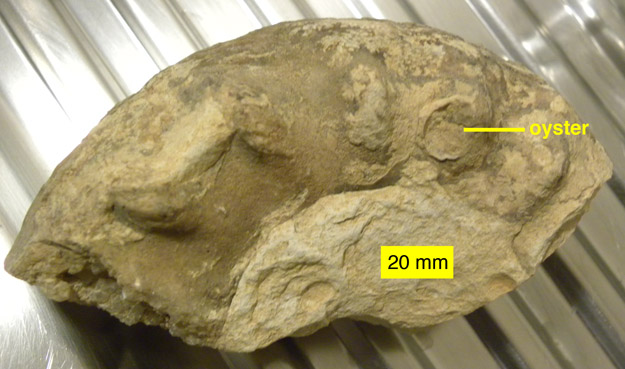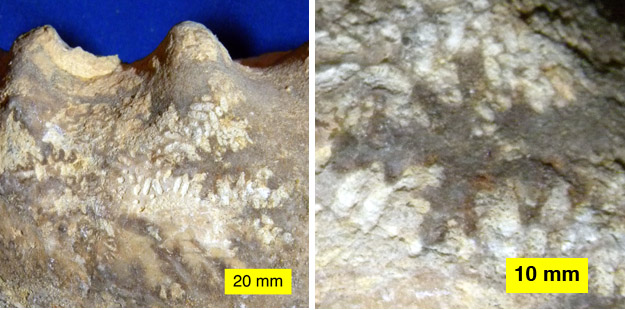MITZPE RAMON, ISRAEL–I can’t help but show off the ammonite I found today in the middle of the Matmor Formation (Goldberg Subunit 51) at Makhtesh Gadol. These photos are the best I could do on a kitchen sink with overhead lighting. (Clearly I have time on my hands once I get back to my room in this little town!)

This is the largest fragment of the ammonite. It is not a lot to look at, I admit, but it is an important indicator of the time the sediments were deposited and the chemistry of the seawater when the animal lived and died. It is an internal mold, meaning that it is the sediment inside the shell after the shell dissolved. What is significant here is that this mold is encrusted by oysters (one is indicated), serpulid worms, and foraminiferans, showing that the shell dissolved and the sediment cemented early on the seafloor -- an example of "Calcite Sea" geochemistry.

On the left is a closer view of the outside of the ammonite internal mold. Note the pattern of oval-shapped divots. I have no idea what they are, but they represent some sort of objects that were in the shell before it dissolved away. On the right is a close-up of the complex ammonitic suture, which was the boundary between the internal septal walls and the outer shell.
That’s probably enough paleontology for the day. If anyone wants to identify this ammonite before I get home, I’ll be grateful!



I really love reading about all of the interesting things you and the other geology faculty have been doing! Are you heading anywhere else on your semester off?
It is much fun, Dan! I hope you are doing well. I will also be doing fieldwork in Texas this semester.
Pingback: Wooster Geologists » Blog Archive » Ammonite Identified